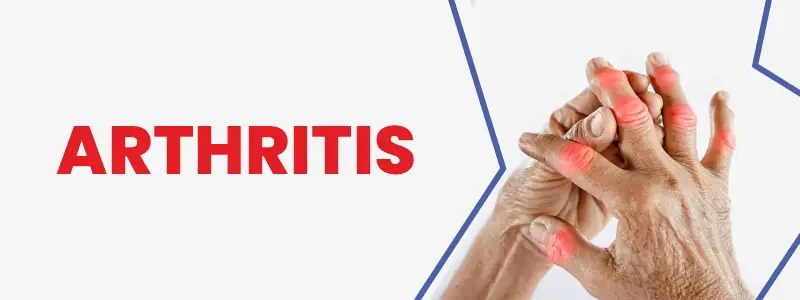While focusing on arthritis, a widespread ailment that affects millions of individuals worldwide, we, as orthopaedic professionals, are committed to providing you with the most outstanding care and treatment choices since we know how arthritis affects your everyday life. Let’s look into the causes, symptoms, diagnoses, and methods of treating arthritis. Arthritis treatment in India is completed with different techniques, equipment and procedure. The team is committed to treating them with high-tech equipment, utmost care, skills and love.

Various Types of Arthritis
Osteoarthritis: Osteoarthritis happens after your joints start deteriorating with age. Weight-bearing of joints includes the joints of the spine, hips, and knees, making them the most commonly affected areas in the body. The degeneration of joint cartilage, which results in pain, oedema, and stiffness, is a primary reason for Osteoarthritis.
Rheumatoid Arthritis: In contrast to Osteoarthritis, Rheumatoid arthritis is an autoimmune condition in which the body’s immune system unintentionally assaults the joints, causing inflammation. It frequently causes severe pain, swelling, and abnormalities in numerous joints.
Other Types: Various Types of Infectious disorders, gout, psoriasis, lupus, and other conditions can also cause. Your doctor will discuss the unique characteristics and treatment considerations of these types with you.
Symptoms
Joint stiffness
Discomfort and swelling
Limited range of motion
Trouble performing everyday tasks
Joint deformities or apparent changes in the joint structure
Fatigue; and fever (in some kinds of arthritis)
Diagnosis
An accurate arthritis diagnosis is essential for successful therapy. Your orthopaedic expert may use a variety of diagnostic methods, such as:
Evaluation of medical history and physical exam
Imaging examinations such as X-rays, MRIs, or CT scans
Blood testing to identify specific markers linked to particular forms.
Analysis of joint fluid (arthrocentesis) to determine the kind and degree.
Treatment Alternatives
Non-surgical Methods:
Non-steroidal anti-inflammatory medicines (NSAIDs), corticosteroids, and disease-modifying anti-rheumatic drugs (DMARDs) are examples of medications.
Exercises stretches, and other forms of physical therapy are used to enhance joint mobility and function.
Examples of assistive devices are canes, braces, or splints that support joints and reduce stress.
Lifestyle changes: joint protective measures, frequent exercise, and weight control.
surgical Alternatives:
Arthroscopy: A minimally invasive method for identifying and treating joint issues.
Joint Replacement: Surgery for partial or complete joint replacement is frequently advised in situations with severe arthritis.
The fusion of two bones within a joint by surgery can lessen discomfort and improve stability.

Conclusion
Arthritis is one of the most common diseases among the elderly, and we understand the pain that patients face due to it. We are committed to treating them with high-technology equipment, utmost care, skills and love. Our expert team of doctors is committed to providing the best services. With orthopaedic treatment in India at affordable prices, we aim to treat your arthritis pain and help you to lead a happy life. Contact us for more details and expert guidance.